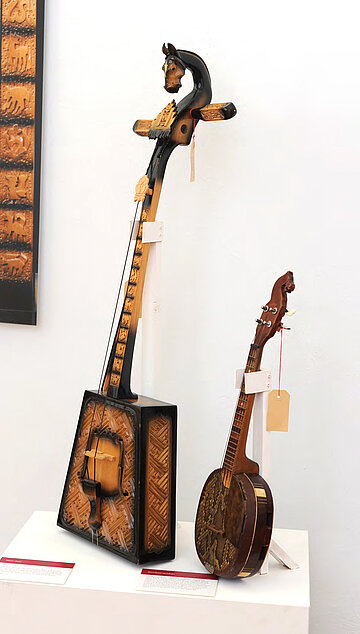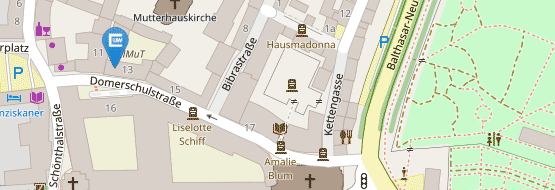Station VI: Horses

Horses in Egypt and Mesopotamia
In contrast to Eastern and Central Europe, the introduction of the horse to the cultures of Western Asia took a long time. Native to neither Egypt nor Mesopotamia, it had to be imported via trade, as booty or tribute from neighboring areas, the Zagros Mountains, Anatolia, or northern Syria. By the end of the second millennium BC at the latest, it had established itself in Egypt and Mesopotamia as a highly respected animal in both the military and religious fields.
The horse was introduced to Egypt from northern Syria and the Levant. Here ruled the Hurrians, who spread in the 2nd millennium BC in northern and western Syria (= Upper Mesopotamia) and founded the mighty empire of Mitanni. Even if little is known of their origins as Indo-Aryan horse nomads sometime in the third millennium, they are the founders of new and special techniques for training horses and draft animals. Later texts on these topics contain terminology that can be clearly traced back to Indo-European origins (the so-called “Kukkuli tract”). It was also the Hurrians who invented the agile and light single-axle chariot, which was then carried to Syria, Mesopotamia, and Egypt.
About the immigration and takeover of power by the originally Levantine so-called Hyksos into northern Egypt (19th–17th century BC), the originally Hurrian horse training art as well as the use of draft horses in particular has spread. The Egyptians have further developed the one-axle chariot, which proved itself in warfare mainly because of its speed and agility, which was feared by opponents. The pharaoh in a chariot with bow and arrow was a popular motif in the New Kingdom (16th–11th centuries BC), demonstrating power and military superiority. Horses and chariots in warfare only made it possible to create a great Egyptian empire in this epoch. Archaeologically, the strong expansion of stables can be observed. But the horse also plays an increasingly important role at festivals, in military triumphal marches, but also in religious processions.
CONTENTS OF THE „KUKKULI-TRACT“
The text from the 13th century BCE contains extremely detailed listings of various types of performance and their duration, including cantering, trotting (trotting parade), galloping, small races, changes of pace, but also practice races with and without a carriage. A total of more than 123 exercises are mentioned—insofar as they are preserved—starting with small movement training sessions, through types of turns to the training of gait changes with a constant increase in the requirements and an increase in the feed rations. From today’s perspective, the most astonishing fact that the Kikkuli text reveals is the “in hand work” that was obviously already known at the time, as well as the application of the knowledge of the need for sensitive handling of the horse’s special psyche when dealing with the animal being trained.
Noble horses, preferably white, were used as diplomatic gifts between the royal houses of Assyria, Babylonia, and Egypt, as evidenced by the international correspondence from Tell el-Armarna (Egypt; 15th-14th centuries BC). They are also valuable tributes and spoils of war. Owning noble and fast horses is a high prestige reserved in Egypt for the pharaoh and his royal family. The introduction of the horse into Egypt and its rise to an important and noble, prestige animal is reflected in the decoration of the lyre. With the lyre, however, less military content is connoted, but rather nobility, beauty, and superiority of the animal as well as its connection to the royal family. The earlier and more frequently encountered symbolism on lyres, namely duck and goose heads, creates a connection to a natural idyll and pharao idleness.
Read more about the history of the horse in Egypt from its introduction to the present.
The Mongolian Horsehead Fiddle
(morin chuur) is a two-stringed lute played with a bow. Its neck end is decorated with a horse‘s head. The strings of the fiddle as well as the stringing of the bow traditionally consist of horsehair.
There are various legends surrounding the origin of the horsehead fiddle. A recurring motif is the death of a beloved horse and the attempt of its owner to make a musical instrument from its skull. Its sound imitates the neighing of the horse or is supposed to accompany the owner’s mourning song for his horse. The close relationship between man and horse expressed in these origin legends must be seen in the context of the nomadic tradition of the Mongols: The horse, both in its function as a farm animal (meat, milk, transport, etc.) and as a companion of the rider and as a living creature that plays a central role in myths and the imagination of the nomads, is of outstanding importance.
That the fiddle is played in a seated posture today is an innovation. In pre-revolutionary Mongolia, women knelt with one or both knees on the ground while playing the fiddle, which is said to be the case only in the countryside today. The change in the posture after the revolution (1911) is explained by the fact that sitting on the floor did not conform to the cultural ideas propagated by the Socialist Party. Indeed, the tradition of the horsehead fiddle, first associated with feudalism by the Socialist Party, was in danger of being extinguished. But there had already been a resurgence of public interest in oral literature in Mongolia since 1956, and with this the horsehead fiddle also obtained a renaissance. From 1990 onwards, Mongolia was governed democratically, and the horsehead fiddle was assigned the role of an icon of a sovereign national identity. In political rituals of democratic Mongolia, the horsehead fiddle is said to symbolize the connection to different periods of the past; likewise, it represents the cosmopolitan character of Mongolian music.
SMM De 543: Morin khuur, Mongolia, 20th century
The instrument has the usual modern shape with wooden box resonator. The ornamental and pictorial decoration is exaggeratedly playful. On the fingerboard there is a jumbled zoo, some of whose inhabitants are not to be found in Mongolia and some are difficult to identify.
SMM De 137: Horsehead mandolin, Buryatia, 20th century
This lute was acquired by the donor from a Buryat folk music group, which called it “djangla”. It is a highly hybrid object. The mandolin parts (neck design, fingerboard, peg machines, brass tailpiece) show traces of modernization, which served to push back regional manufacturing practices in the USSR. Relics of possible “origins” can be seen in the snakeskin covering and in the design of the neck end as a horse head (schematized like a chess piece—which is reminiscent of the Morin Huur or the Uigur Igil).







